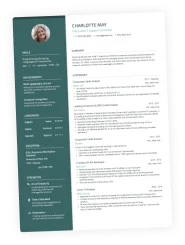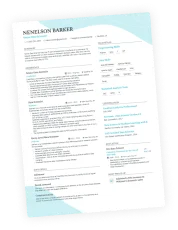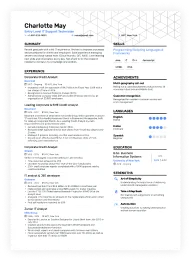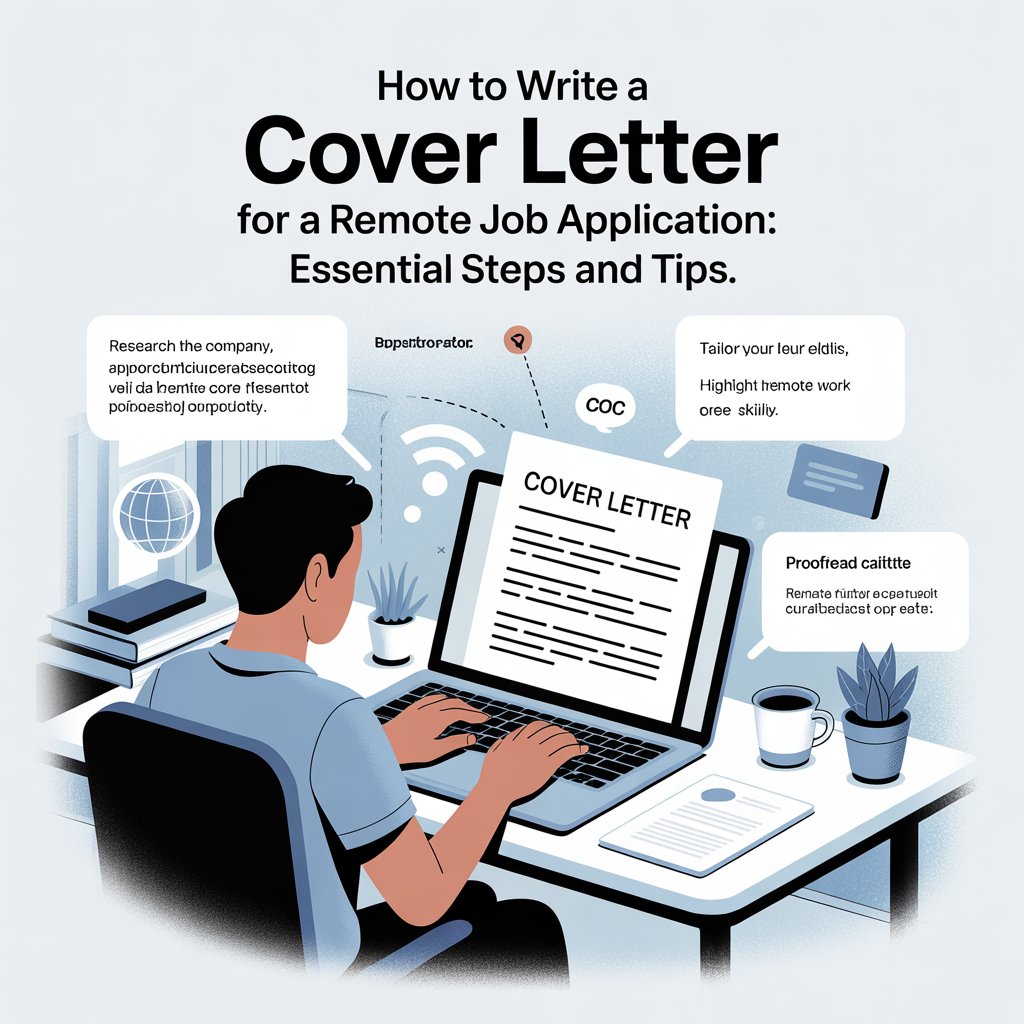If you’re aiming for an Executive Assistant position, nailing your cover letter is key. This document isn’t just a formality; it’s your chance to show off your skills and how you fit into the company’s vibe. A well-crafted cover letter for executive assistant roles can really set you apart from the crowd. In this guide, we’ll go over essential tips, examples, and templates to help you create a standout cover letter that grabs attention and gets you noticed.
Key Takeaways
- Tailor your cover letter to the specific needs of the role and the company.
- Highlight your organizational skills with specific examples of past successes.
- Use clear, action-oriented language to describe your responsibilities and achievements.
- Avoid generic phrases; personalize your greeting and content for each application.
- Proofread your cover letter to eliminate errors and ensure professionalism.
Understanding the Role of an Executive Assistant

Key Responsibilities of an Executive Assistant
Executive Assistants are the backbone of any successful executive’s office. Their duties are diverse and demand a high level of competence. You’ll find them managing schedules, coordinating travel, and handling communications. They also prepare reports, organize events, and act as a point of contact between executives and internal/external stakeholders. It’s a role that requires adaptability and a proactive approach.
- Managing complex calendars and scheduling meetings.
- Coordinating travel arrangements, including flights and accommodations.
- Preparing presentations, reports, and other documents.
The best Executive Assistants are those who anticipate needs and solve problems before they escalate. They are masters of organization and communication, ensuring the executive’s day runs smoothly and efficiently.
Essential Skills for Success
To really shine as an Executive Assistant, you need a specific set of skills. Organization is key, of course, but communication skills are just as important. You’ll need to be able to write clearly, speak confidently, and listen attentively. Technical skills are also a must, including proficiency in Microsoft Office Suite and other relevant software. Problem-solving skills, discretion, and the ability to multitask are also important. You need to be able to handle administrative tasks with ease.
- Proficiency in Microsoft Office Suite (Word, Excel, PowerPoint, Outlook).
- Excellent written and verbal communication skills.
- Strong organizational and time-management abilities.
The Importance of Organizational Skills
Organizational skills are not just important; they are absolutely essential for an Executive Assistant. Without them, it’s nearly impossible to manage the many tasks and responsibilities that come with the job. This includes managing schedules, organizing files, prioritizing tasks, and keeping track of important deadlines. Strong organizational skills ensure that nothing falls through the cracks and that the executive can focus on their core responsibilities. If you want to write effective cover letters, you need to show off these skills.
- Managing and prioritizing multiple tasks simultaneously.
- Maintaining accurate records and filing systems.
- Coordinating complex projects and events.
Crafting a Compelling Introduction
Your cover letter’s introduction is your first chance to grab the hiring manager’s attention. It’s where you make a strong first impression and set the stage for why you’re the perfect fit for the executive assistant position. A well-crafted introduction can significantly increase your chances of getting an interview. Let’s explore how to make it count.
Personalizing Your Greeting
Instead of using generic greetings, take the time to find the hiring manager’s name. A little research on LinkedIn or the company website can go a long way. Addressing your cover letter to a specific person shows that you’ve done your homework and are genuinely interested in the role. For example, "Dear Mr. Smith" is much more effective than "To Whom It May Concern." This personalized approach adds a professional touch and demonstrates respect. Using a generic greeting is one of the common mistakes to avoid.
Connecting with the Company’s Mission
Show that you understand the company’s values and how your skills align with their goals. Mention a specific project or achievement of the company that resonates with you. This demonstrates that you’re not just looking for any job, but that you’re genuinely interested in contributing to their success. It shows you’ve done your research and are invested in their mission. For instance, you might say, "I am drawn to [Company’s Name] for its commitment to innovation…"
Setting the Tone for Your Cover Letter
Your introduction should immediately highlight your most relevant skills and experience. Briefly mention your years of experience and key skills to grab the hiring manager’s attention right away. Clearly state the position you are applying for and express your enthusiasm for the role. This sets a positive and confident tone for the rest of your cover letter. Think of it as your elevator pitch – a concise and compelling summary of why you’re the best candidate.
A strong introduction should be concise, engaging, and tailored to the specific job and company. It’s your opportunity to make a memorable first impression and convince the hiring manager to read on.
Highlighting Relevant Skills and Experience
This section is where you really sell yourself. It’s not enough to just list skills; you need to show how you’ve used them to achieve results. Think of it as providing evidence to back up your claims. Let’s break down how to do this effectively.
Identifying Transferable Skills
Even if you don’t have direct experience as an executive assistant, you likely possess transferable skills that are highly relevant. These are skills you’ve gained in other roles that can be applied to this position. For example, if you’ve worked in customer service, you’ve honed your communication and problem-solving abilities. If you’ve managed projects, you have organizational and time-management skills. The key is to identify these skills and explain how they relate to the responsibilities of an executive assistant. Think about these:
- Communication: Clear and effective written and verbal communication.
- Organization: Managing schedules, files, and information efficiently.
- Problem-solving: Addressing challenges and finding solutions proactively.
Quantifying Achievements
Whenever possible, use numbers to demonstrate the impact of your work. Instead of saying "I improved efficiency," say "I improved efficiency by 15%." Instead of saying "I managed events," say "I managed events with budgets up to $50,000 and attendance of over 200 people." Quantifying your achievements makes your contributions more tangible and impressive. Here’s an example of how to present this data:
| Achievement | Result |
|---|---|
| Streamlined filing system | Reduced file retrieval time by 20% |
| Managed travel arrangements | Saved the company 10% on travel costs |
| Coordinated team meetings | Increased meeting attendance by 15% |
Showcasing Technical Proficiency
In today’s workplace, technical skills are essential for executive assistants. Be sure to highlight your proficiency with relevant software and tools. This could include:
- Microsoft Office Suite (Word, Excel, PowerPoint, Outlook)
- Google Workspace (Gmail, Google Calendar, Google Docs)
- Project management software (Asana, Trello)
- CRM software (Salesforce, HubSpot)
It’s important to tailor your technical skills to the specific requirements of the job description. If the job posting mentions a particular software program, be sure to highlight your experience with it. If you don’t have experience with a particular program, consider taking an online course to learn the basics. You can also mention your willingness to learn new technologies quickly.
Don’t just list the programs you know; provide examples of how you’ve used them to achieve results. For example, "I used Excel to create a budget tracking system that reduced errors by 10%" or "I used PowerPoint to create presentations that helped secure executive assistant positions with new clients."
Structuring Your Cover Letter Effectively
Using a Professional Format
First impressions matter, and your cover letter’s format is the initial handshake. Stick to standard business letter conventions. Use a clean, readable font like Times New Roman or Arial, around 12pt. Margins should be approximately one inch on all sides. A well-formatted letter shows attention to detail and respect for the reader’s time. It’s like showing up to an interview dressed sharply – it signals you take the opportunity seriously. Make sure your contact information is prominently displayed at the top, followed by the date and the recipient’s details. This is basic, but crucial. You can use online tools to create a cover letter that looks professional.
Creating Clear and Concise Paragraphs
Brevity is your friend. Hiring managers are busy people, so get to the point quickly. Each paragraph should focus on a single idea or theme. Start with a strong opening sentence that grabs the reader’s attention. Avoid rambling or including irrelevant information. Aim for paragraphs that are no more than five or six sentences long. Clarity is key – make it easy for the reader to understand why you’re a good fit for the role. Think of it like this: you’re telling a story, but you only have a few minutes to tell it. Make every word count.
Incorporating Action-Oriented Language
Use verbs that show you’re a doer, not just a talker. Instead of saying "I was responsible for managing schedules," say "I managed complex schedules for multiple executives, ensuring seamless coordination." Action verbs like "managed," "coordinated," "implemented," and "achieved" make your accomplishments sound more impressive. Back up these claims with specific examples and quantifiable results whenever possible. For example:
- Managed calendars for three senior executives, reducing scheduling conflicts by 15%.
- Coordinated travel arrangements for international conferences, saving the company $5,000 in travel expenses.
- Implemented a new filing system that improved document retrieval time by 20%.
Using action-oriented language isn’t just about sounding good; it’s about demonstrating the value you bring to the table. It shows that you’re not just capable, but also proactive and results-driven. It’s about showing your skills and how you can contribute to the company’s success.
Common Mistakes to Avoid in Your Cover Letter
Generic Greetings and Content
It’s easy to fall into the trap of using a generic greeting like "To Whom It May Concern." This can make your application seem impersonal right off the bat. Instead, take the time to find the hiring manager’s name. If that’s not possible, using "Hiring Manager" or the specific department is a better alternative. Also, avoid using a cookie-cutter cover letter. Tailor it to the specific job description and company values. Show them you’ve done your homework and understand what they’re looking for. This shows you are serious about the executive assistant position.
Neglecting to Tailor Your Letter
One of the biggest mistakes is failing to tailor your cover letter to the specific job and company. A generic cover letter screams that you haven’t put in the effort to understand the role or the organization. Always customize your letter to highlight the skills and experiences that directly align with what the employer is seeking. This might involve:
- Carefully reviewing the job description.
- Identifying the key skills and qualifications they’re looking for.
- Providing specific examples of how you’ve demonstrated those skills in the past.
Failing to connect your skills and experiences to the specific requirements of the job is a missed opportunity to show the employer why you’re the perfect fit.
Overloading with Irrelevant Details
Stick to relevant professional experiences and skills. Avoid personal anecdotes or unrelated job experiences that don’t showcase your suitability for the Executive Assistant position. Keep it concise and focused. Remember, the goal is to highlight why you’re a great fit for this role, not to provide a complete life story. Think quality over quantity. Make sure to highlight your organizational skills.
Examples of Effective Cover Letters
It can be super helpful to see some real-life examples of cover letters that worked. It gives you a better idea of what to aim for and how to structure your own. Let’s look at a few different scenarios.
Traditional Background Example
Let’s say you’ve been an executive assistant for years. Your cover letter should really highlight your experience and accomplishments. Focus on quantifiable results and how you’ve made a difference in your previous roles. For example, instead of just saying you managed schedules, mention how you improved scheduling efficiency by 15%.
- Managed calendars for three executives, coordinating travel arrangements and meetings across multiple time zones.
- Prepared expense reports and processed invoices, ensuring accuracy and timely payments.
- Served as the primary point of contact for internal and external stakeholders, handling inquiries and resolving issues promptly.
A strong cover letter for someone with a traditional background will showcase a proven track record of success and demonstrate a deep understanding of the executive assistant role.
Non-Traditional Background Example
Maybe you’re switching careers or don’t have direct executive assistant experience. That’s okay! The key is to focus on transferable skills. Think about skills you’ve gained in other roles that are relevant to an executive assistant position, like organization, communication, and problem-solving.
- Highlight project management experience, showcasing your ability to manage multiple tasks simultaneously.
- Emphasize customer service skills, demonstrating your ability to interact professionally with clients and colleagues.
- Showcase your proficiency in software and technology relevant to the role.
Volunteer Experience Example
Don’t underestimate the power of volunteer work! If you lack paid experience, volunteering can be a great way to demonstrate your skills and commitment. Focus on the responsibilities you had and the impact you made. Did you organize events? Manage communications? These are all valuable skills. A cover letter for an executive assistant position should emphasize relevant skills.
- Coordinated volunteer schedules and managed communications for a non-profit organization.
- Organized fundraising events, resulting in a 20% increase in donations.
- Provided administrative support to the organization’s leadership team.
| Skill | Example |
|---|---|
| Organization | Managed a database of over 500 volunteers. |
| Communication | Drafted and distributed newsletters to keep volunteers informed. |
| Problem-solving | Resolved scheduling conflicts and addressed volunteer concerns effectively. |
Utilizing Templates for Your Cover Letter
Benefits of Using Templates
Okay, so you’re staring at a blank page, and the cursor is just mocking you, right? That’s where templates come in. Think of them as training wheels for your cover letter. They give you a structure to start with, so you’re not completely lost. They help with formatting, making sure everything looks professional and is easy to read. Plus, they can remind you of key sections you might otherwise forget, like mentioning specific skills or achievements. It’s like having a cheat sheet that still lets you show off your personality. Using a template can save you a ton of time and stress, letting you focus on the actual content rather than fiddling with margins and fonts. You can find cover letter templates online.
Where to Find Quality Templates
Finding good templates is easier than you think. Microsoft Word has a bunch built right in, which is super convenient if you already use it. There are also tons of websites that offer free and premium templates. LinkedIn, for example, often has resources for job seekers, including cover letter templates. Just be careful to pick templates that look modern and professional, not something that looks like it’s from the early 2000s. Also, read reviews or check out previews before you download anything, just to make sure it’s actually good quality. Don’t forget to check out career advice websites; they often have curated collections of templates that are designed to impress. Here are some places to look:
- Microsoft Word (built-in templates)
- LinkedIn (career resources)
- Canva (design-focused templates)
- Resume.com (career-specific templates)
Customizing Templates for Your Needs
Don’t just grab a template and fill in the blanks! That’s a recipe for a generic, boring cover letter. The real trick is to customize it. Change the wording to sound like you, not a robot. Add specific examples from your experience that show why you’re perfect for the job. Rearrange sections to highlight your most relevant skills. Basically, make the template your own. Think of it as a starting point, not the finish line. If the template has a section that doesn’t quite fit, get rid of it or replace it with something that does. The goal is to create a cover letter that’s both professional and personal, and that shows the hiring manager why you’re the best candidate. Remember, executive assistant samples are a great starting point.
Proofreading and Finalizing Your Cover Letter
Importance of Proofreading
Okay, you’ve poured your heart and soul into crafting what you believe is the perfect cover letter. But hold on! Before you hit that send button, you absolutely must, without exception, proofread. I mean, really proofread. Typos and grammatical errors can instantly sink your chances, no matter how amazing your qualifications are. It shows a lack of attention to detail, and nobody wants an Executive Assistant who misses the small stuff. Trust me, I’ve seen it happen. A simple mistake can be the difference between landing an interview and getting passed over. So, take a deep breath, step away for a few minutes, and then come back with fresh eyes. It’s worth the effort.
Tools for Error Checking
So, you’ve read your cover letter a dozen times, and you think it’s perfect? Great! Now, let technology lend a hand. There are some really useful tools out there that can catch errors your tired eyes might have missed. Think of them as your digital proofreading buddies. Here are a few options:
- Grammarly: This is a popular choice for a reason. It catches grammar, spelling, punctuation, and even style issues. The free version is pretty good, but the premium version is even better.
- Hemingway Editor: This tool focuses on making your writing clear and concise. It highlights lengthy sentences, adverbs, and passive voice, helping you to write in a more direct and impactful way. It can help you emphasize measurable outcomes.
- Microsoft Word/Google Docs: Don’t forget the built-in spell and grammar checkers in these programs. They’re not perfect, but they can catch some of the more obvious errors.
Also, consider using online dictionaries and thesauruses to double-check word choices and ensure you’re using the right tone. It’s all about making the best impression possible.
Getting Feedback from Others
Alright, you’ve proofread, you’ve used the tools, but there’s one more step you should take: get a second opinion. Seriously, ask a friend, family member, or even a former colleague to read your cover letter. Fresh eyes can catch mistakes you’ve become blind to. Plus, they can give you valuable feedback on the overall tone and clarity of your writing. Here’s why it’s so important:
- Different Perspective: Someone else might notice something you completely missed.
- Clarity Check: They can tell you if your writing is clear and easy to understand.
- Honest Feedback: A trusted friend will give you honest feedback, even if it’s not what you want to hear.
Getting feedback is like having a safety net. It’s a chance to catch any last-minute errors and make sure your cover letter is the best it can be. Don’t be afraid to ask for help; it could make all the difference. A strong closing is key.
So, before you send that cover letter off into the digital abyss, take the time to proofread, use the tools, and get feedback from others. It’s a small investment of time that can pay off big time in the long run.
Following Up After Sending Your Cover Letter
When to Follow Up
Knowing when to follow up after submitting your cover letter and resume is key. Generally, it’s wise to wait about one to two weeks after the application deadline or your interview before reaching out. This gives the hiring team enough time to review applications. However, if the job posting explicitly states a timeline, adhere to that. Don’t be afraid to show your continued interest, but avoid being overly persistent, which can be off-putting.
Here’s a simple guide:
- No stated deadline: Follow up in 7-10 business days.
- Specific deadline mentioned: Wait until after that date.
- After an interview: Send a thank-you note within 24 hours, and a follow-up email in about a week if you haven’t heard back.
How to Craft a Follow-Up Email
Your follow-up email should be concise and professional. Reiterate your interest in the Executive Assistant position and briefly mention key qualifications that align with the job description. Refer to your previous communication (cover letter and resume) and express your eagerness to discuss how you can contribute to the company. Keep the tone positive and enthusiastic. Proofread carefully to avoid any errors.
Here’s what to include:
- A clear subject line: "Following Up – Executive Assistant Application"
- A brief reminder of your application date and the specific position.
- A highlight of one or two key skills or experiences.
- A polite expression of your continued interest and availability for an interview.
Remember, the goal is to gently remind the hiring manager of your application and reinforce your enthusiasm for the role. Avoid sounding demanding or entitled.
Maintaining Professionalism in Communication
Throughout the entire job application process, maintaining professionalism is paramount. This includes your follow-up communications. Use proper grammar and spelling, avoid slang, and address the recipient respectfully. If you’re unsure of the hiring manager’s name, a general greeting like "Dear Hiring Team" is acceptable. Be mindful of your tone; aim for confident and courteous. Even if you don’t receive a response, maintain a positive attitude. Consider each application as a learning experience. You can use follow-up email templates to help you maintain a professional tone.
After you send your cover letter, it’s a good idea to follow up. This shows that you are really interested in the job. You can send a polite email or make a quick phone call to check on your application. If you want to make your job search easier, visit our website to see how RoboApply can help you get hired faster!
Wrapping It Up: Your Path to a Winning Cover Letter
So, there you have it! Crafting a standout cover letter for an Executive Assistant role doesn’t have to be a daunting task. Just remember to keep it personal, highlight your skills, and show why you’re a great fit for the company. Don’t forget to proofread—nothing says ‘I’m not serious’ like a letter full of typos. Take your time, follow the tips we discussed, and you’ll be on your way to landing that interview. Good luck, and happy writing!
Frequently Asked Questions
What is the main purpose of a cover letter for an Executive Assistant position?
The cover letter helps you introduce yourself to potential employers and explain why you are a good fit for the Executive Assistant role.
How long should my cover letter be?
Your cover letter should be about one page long, which is usually three to four paragraphs.
What should I include in the introduction of my cover letter?
Start with a personal greeting, mention the job you are applying for, and briefly explain why you are interested in the position.
How can I make my cover letter stand out?
Use specific examples from your experience, show your passion for the company, and highlight your relevant skills.
Should I use a template for my cover letter?
Yes, using a template can help you structure your cover letter, but make sure to customize it to fit your experiences and the job.
What are common mistakes to avoid in a cover letter?
Avoid using generic greetings, writing a one-size-fits-all letter, and including irrelevant details that do not relate to the job.
How important is proofreading my cover letter?
Proofreading is very important. A letter with mistakes can make a bad impression on employers.
What should I do after sending my cover letter?
Follow up with a polite email after a week or two to show your interest and check on the status of your application.











